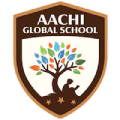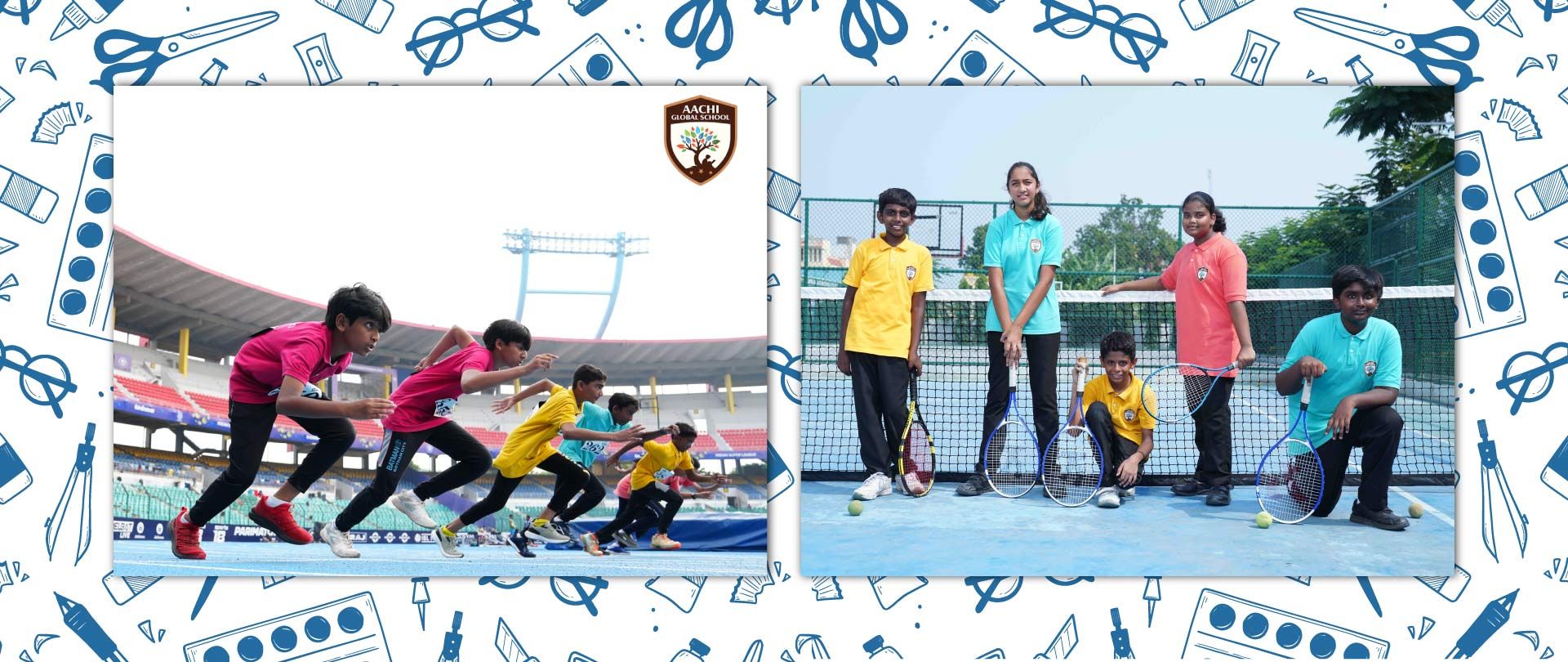The role of physical education is vital in a child’s overall development. It is not just about sports or games; it promotes physical fitness, mental well-being, and essential life skills like teamwork and discipline.
In today’s digital age, where screen time is high and outdoor play is limited, physical education helps children stay active and healthy. It also boosts concentration, improves academic performance, and fosters confidence.
Introducing structured physical activities in school encourages a healthy lifestyle from a young age. In this blog post from Aachi Global School, we’ll explore the need and importance of physical education in schools and how it benefits students in the long run.
Let's get started!
Physical Education Meaning: What Do You Mean by Physical Education?
Physical education, also known as PE, is a subject taught in schools that focuses on keeping the body active and healthy. It involves learning about different types of exercises, sports, and physical activities that help improve strength, flexibility, coordination, and overall fitness.
The objectives of physical education are not just to play games but to understand how the body works, how to stay fit, and how to maintain a healthy lifestyle. Through physical education in schools, students also learn important life skills such as teamwork, discipline, leadership, and fair play.
It encourages them to stay active, which is important for both physical and mental well-being. Regular physical activity helps reduce the risk of diseases like obesity, diabetes, and heart problems.
In short, the concept of physical education plays a key role in shaping healthy habits and building a strong body and mind from an early age.
Suggested Read: The Importance of Education for Students: 11 Reasons It Truly Matters
What Are the Objectives of Physical Education in Schools?
1. Physical Development
One of the core objectives of physical education is to enhance physical fitness. It focuses on improving strength, endurance, flexibility, coordination, and overall motor skills. The role of physical education in schools is to ensure that students develop healthy bodies and an active lifestyle from an early age.
2. Mental Development
The purpose of physical education also includes mental sharpening. Many activities involve strategic thinking, quick decision-making, and concentration, which help develop cognitive abilities. Physical activity can reduce stress and anxiety, contributing to better mental well-being. This highlights the need of physical education for maintaining a balanced mind and body.
3. Emotional Development
Physical education fosters emotional resilience. By participating in activities and sports, students gain confidence, learn to manage emotions, and develop perseverance. These experiences help them handle both success and setbacks gracefully, making emotional growth a vital objective of physical education.
4. Social Development
A major benefit of physical education in schools is that it builds social skills. Through group games and team sports, students learn to communicate, collaborate, lead, and respect others. It also teaches them to follow rules and resolve conflicts—skills that are essential in both academic and real-world settings.
5. Moral Development
Health and physical education programmes are designed to instil values such as integrity, honesty, responsibility, and fairness. Students learn to play by the rules and show respect towards opponents, emphasising the ethical purpose of physical education.
6. Health and Hygiene Awareness
Beyond just fitness, the significance of physical education relies on educating students on the importance of hygiene, nutrition, and regular exercise. It creates awareness of healthy habits and promotes preventive healthcare, ensuring a lifetime of wellness.
What Are the Benefits of Physical Education in Schools?
1. Boosts Physical Health
Staying active isn’t just fun—it’s essential. One of the greatest benefits of physical education is its role in improving cardiovascular fitness, flexibility, and overall strength. It helps students develop healthy routines early in life, reducing the risks of obesity and related conditions.
Example: A child who regularly plays basketball builds stamina and enjoys better physical well-being.
2. Enhances Mental Well-being
Movement is a natural mood booster. Among the notable advantages of physical education is its positive effect on mental health. Regular activity helps reduce anxiety, improve concentration, and uplift overall mood, leading to emotionally balanced, more resilient students.
Example: A short stretch break before class helps students feel relaxed and mentally prepared for the day.
3. Improves Academic Performance
Did you know physical activity can fuel brainpower? A primary objective of physical education is to support cognitive development. It improves memory, attention, and learning abilities, directly influencing academic results and behaviour in class.
Example: Students who take part in early morning exercises show sharper focus and perform better in subjects like math and science.
4. Builds Social and Emotional Skills
Physical education in schools creates a playground for life lessons. Among the key aims and objectives of physical education is building emotional intelligence and social interaction. Teamwork, leadership, and conflict resolution are naturally taught through sports and games.
Example: During team games, students learn to communicate effectively, resolve disputes, and celebrate success together.
5. Fosters Discipline and Responsibility
More than just play, PE encourages character building. A core objective of physical education is to instil discipline, accountability, and a sense of responsibility in students. It teaches them the value of practice, perseverance, and time management.
Example: A student who practises daily for a sports meet learns consistency, dedication, and the importance of showing up.
6. Encourages Lifelong Fitness Habits
Good habits begin young. One of the lasting advantages of physical education is inspiring a lifetime commitment to fitness and wellness. Early exposure to physical activity fosters habits that students carry into adulthood.
Example: Motivated by school fitness sessions, a student takes up weekend cycling as a regular hobby for staying fit.
Aachi Global School: Emphasising the Importance of Physical Education for Holistic Growth
At Aachi Global School (AGS), physical education is not just an add-on—it’s a core pillar of the school's mission to nurture balanced and confident individuals. AGS deeply values the importance of physical education and integrates it meaningfully into everyday school life to support students’ overall well-being and development.
Understanding the true objectives of physical education, the school organises various events throughout the year to promote fitness, teamwork, and self-discipline. These events not only serve the purpose of physical education but also foster healthy habits, emotional resilience, and leadership qualities in children.
Noteworthy events such as the Holistic Gymnastics Training provide students with an opportunity to explore flexibility, coordination, and mental focus. Similarly, the Comprehensive Skating Program and Skill Development event give students hands-on exposure to balance, stamina, and body control, truly showcasing the advantages of physical education.
Students also take part in large-scale inter-school events like the Rover Sports Competition held at Nehru Stadium. These competitions offer a platform to apply the lessons of sportsmanship, strategic thinking, and determination, highlighting the significance of physical education in real-time scenarios.
One of the most anticipated occasions on campus is the Annual Sports Day, which celebrates every student’s participation and effort. This event aligns with the goals of health and physical education by encouraging physical activity, friendly competition, and school spirit across all age groups.
In addition to these, AGS offers a diverse range of activities, including football, cricket, volleyball, and archery, to ensure that students experience the benefits of teamwork, strategy, precision, and focus. These sports programs are designed to develop critical life skills such as collaboration, problem-solving, and perseverance.
At AGS, students don’t just learn about physical education in theory—they experience it through engaging, well-structured, and purposeful events. Aachi Global School stands committed to nurturing active, agile, and aware young minds ready to take on life with strength and confidence.
Suggested Read: AGS 2024 REWIND: Celebrating a Year of Learning, Achievements & Legacy
Conclusion
In today’s fast-paced, tech-driven world, the need and importance of physical education in schools cannot be overstated.
The role of physical education plays a pivotal role in the holistic development of students, fostering physical fitness, mental well-being, and the development of essential life skills.
At Aachi Global School, we provide an international education experience that nurtures both the mind and body. Our school offers a curriculum that integrates academics, physical education, and extracurricular activities, ensuring a well-rounded development for each student.
With branches in Anna Nagar and Ayanambakkam, we are dedicated to delivering world-class education through our Cambridge IGCSE and CBSE curricula, ensuring a global perspective and academic excellence for every student.
Admissions for the 2025-26 academic year are now open! Give your child the opportunity to excel in an international school environment that values academic excellence and physical well-being.
For more details or to apply, check out our online admission form. Feel free to contact us with any questions, as our dedicated team is here to assist you and guide you smoothly through the admission process!
Stay ahead with the latest in education trends and insightful topics—check out our blog section now!
FAQs on the Importance of Physical Education
1. Who Is the Father of Physical Education?
The Father of Physical Education is Friedrich Ludwig Jahn, a German educator and gymnast who is credited with pioneering the development of physical education and promoting gymnastics as a key discipline.
2. What Does Physical Education Teaches Us?
The concept of physical education teaches the students the importance of physical fitness, teamwork, discipline, and perseverance. It encourages healthy habits, enhances mental well-being, and fosters personal growth through sports and exercise.
3. Which Is Not an Objective of Physical Education?
An objective of physical education is not to focus solely on theoretical learning or academic subjects. It aims to enhance physical fitness, motor skills, teamwork, and overall well-being.
4. How Can Physical Education Help in Moral and Character Building?
Physical education promotes teamwork, discipline, and respect, fostering moral values like fairness, responsibility, and self-control. It helps children develop character traits such as perseverance, integrity, and leadership.
5. What Do You Mean by Physical Education?
Physical Education (PE) is the study and practice of physical fitness, sports, and exercise, aiming to improve physical health, develop motor skills, and promote teamwork and discipline.
6. What Are the Benefits of Physical Education?
Physical education promotes physical fitness, improves mental health, enhances teamwork skills, boosts academic performance, fosters discipline, and encourages lifelong healthy habits, benefiting overall well-being and development.
7. What Is the Aim of Physical Education?
Physical education aims to promote physical fitness, develop motor skills, encourage healthy lifestyle choices, foster teamwork and discipline, and enhance overall well-being through physical activity and sports.




